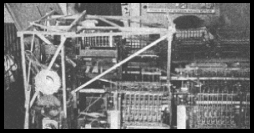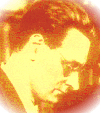Konrad Zuse and the Z1


Konrad Zuse- (1910-1995)
Konrad Zuse was a construction engineer for the Henschel Aircraft Company in Berlin, Germany, at the beginning of WW2, who built himself a series of calculators to assist himself in his engineering work. Zuse's inventions have earned him the semi-official title of being "The Inventor of the First Computer".
Zuse learned that one of the most aspects of building a large calculation, with either a slide ruler or a mechanical adding machine is keeping track of all intermediate results and using them in their proper place. Later on in his calculations, Zuse realized that an automatic-calculator device would require three basic elements: a control, a memory, and a calculator for the arithmetic. He constructed his first three digital-calculators/computers during WW2, but was unable to convince the Nazis government to support his work, for a computer based on electronic valves, the proposal was rejected on the grounds that the Germans were so close to winning the war and that further research efforts were not necessary. Zuse left for Zurich to finish his work and later moved to the United States, where he founded his own company for the construction and marketing of his designs.
Konrad's Achievements
1936- Zuse builds a mechanical only calculator/binary computer called Z1, made to speed up his lengthy engineering calculations. The Z1 was Zuse's test model which he used to explore several ground-breaking technologies in calculator development. On the software side there was program control for using the binary system of numbers and floating point arithmetic, a high-capacity memory, and modules or relays operating on the yes/no principle. Not all of Zuse's ideas were fully implemented in the Z1, Zuse succeeded more with each prototype.
1939- Zuse completed the Z2, the first, fully functioning, electro-mechanical computer that was able to complete his design for using relay type operations.
1941- The Z3 (completed on December 5, and is made from recycled materials donated by fellow university staff and students) was the world's first, electronic, fully programmable computer. The Z3 was based on relays and was very sophisticated for its time, it utilized the binary number system and could handle floating-point arithmetic. Paper being in short supply in Germany, Zuse used old movie films to store his programs and data with the Z3, instead of using paper tape or punch cards.
1946- Zuse develops the first arithmetic programming language, called "Plankalkul", with which he wrote a chess playing program. "Plankalkul" included arrays and records, and used a style of assignment (storing the value of an expression in a variable), in which the new value appears on the right. An array is a collection of identically typed, data items, distinguished by their indices (or "subscripts"), for example written something like A[i,j,k], where A is the array name and i,j and k are indices. Arrays are appropriate for storing data, which must be accessed in an unpredictable order in contrast to lists, which are best when accessed sequentially.
1949- The Z4, escapes being destroyed like the Z1 thru Z4, by being smuggled from Germany to Zurich, Switzerland, where Zuse completed and installed the Z4 in the Applied Mathematics Division of Zurich's Federal Polytechnical Institute, where it was used until 1955. Z4 had a mechanical memory with a capacity of 1,024 word, several card readers (Zuse no longer had to use movie film) and punches, and various facilities to enable flexible programming (address translation and conditional branching).